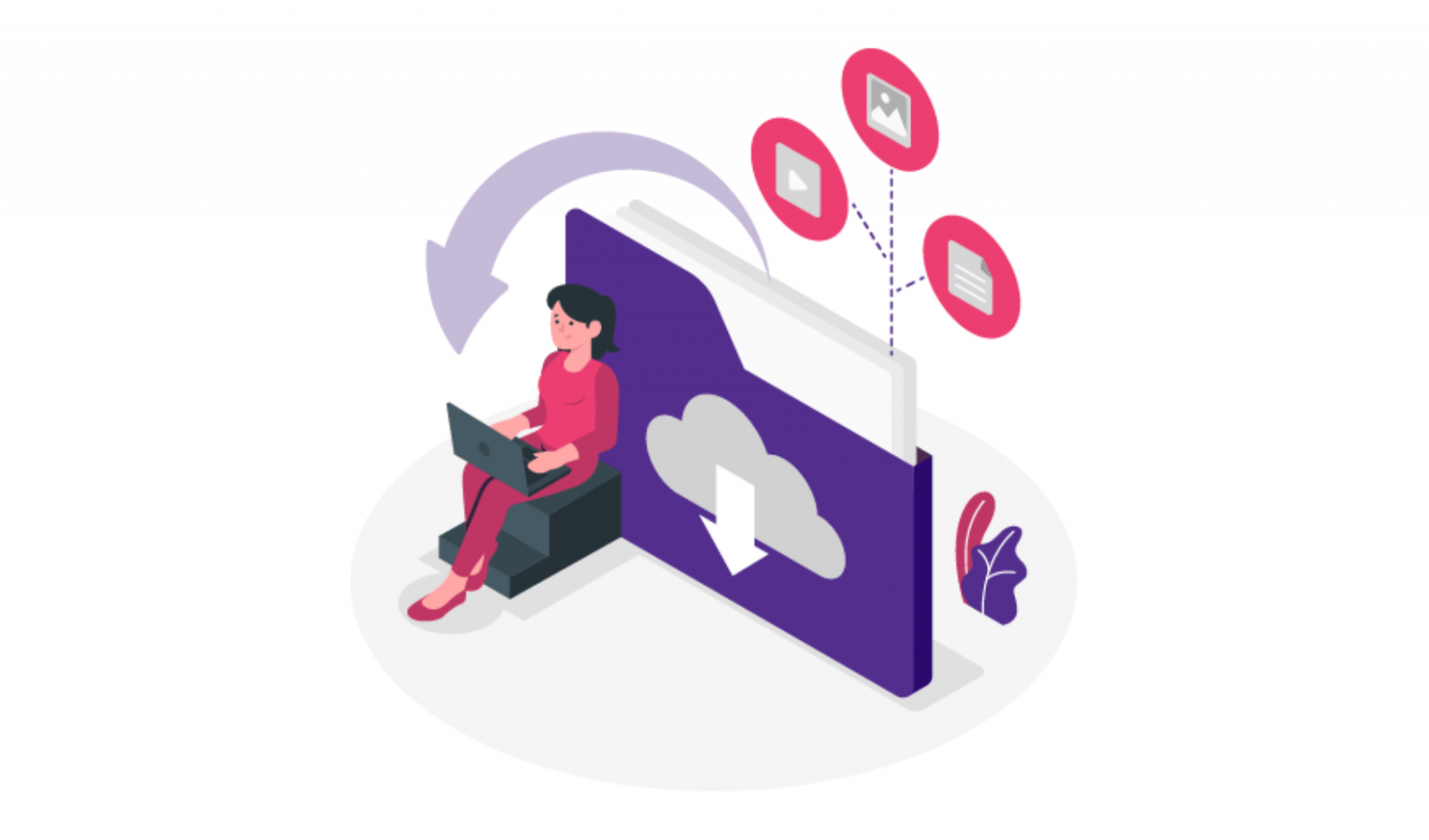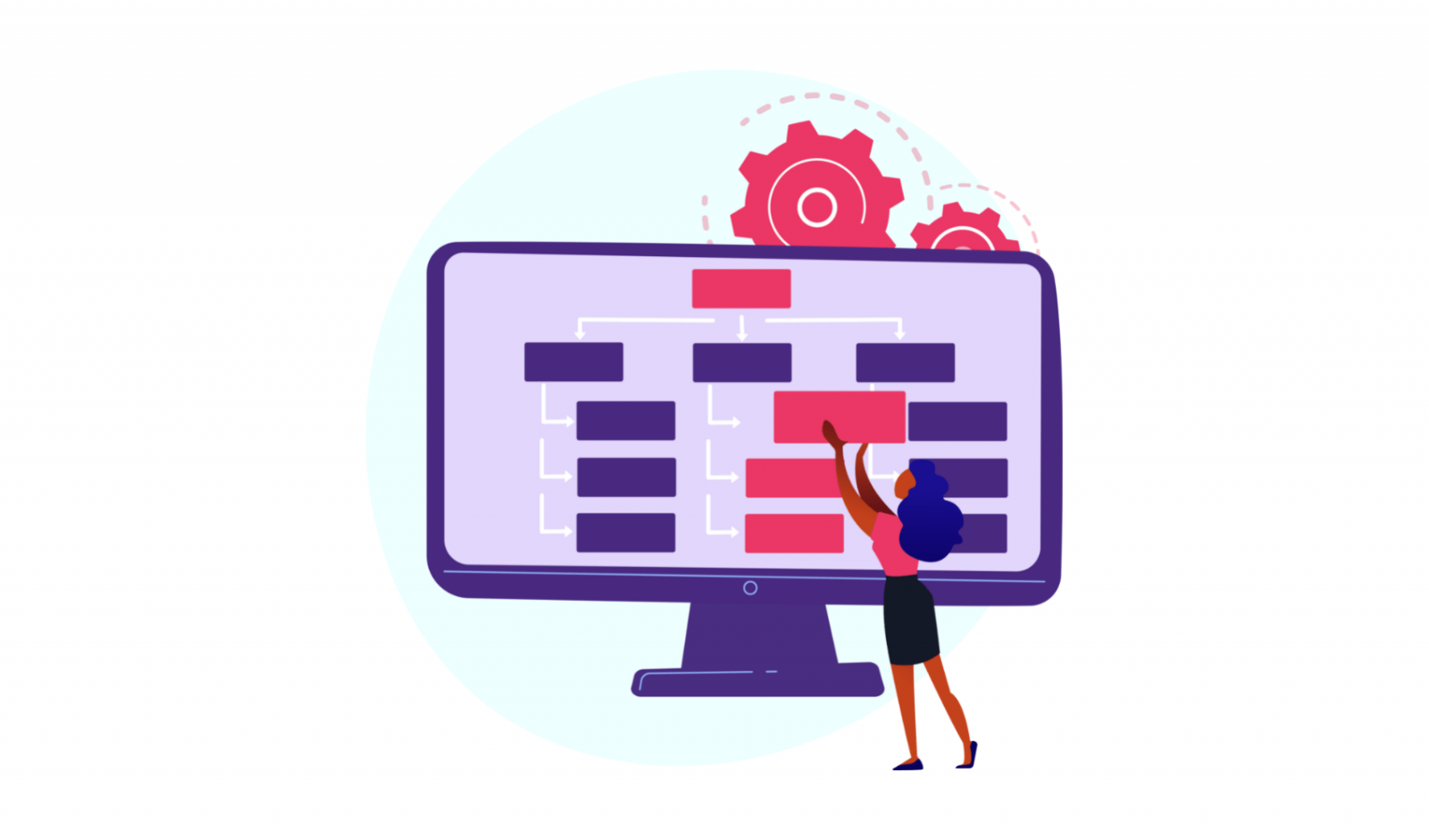If you have ever used a website in the modern era, you may probably wonder how they were made. The 2 phrases “frontend” and “backend” are frequently used when mentioning web development. “Frontend” refers to the user interface and the clickable elements of a website that you view on your browser. On the other hand, “backend” refers to a server, an application, and a clearly defined database behind the “face” of the web.
As a result, the website backend is among the most crucial parts of the website development process, playing as the “backbone” of the software operation.
What Is Website Backend?

A website backend, or web backend, is where all the data and information that will be displayed to users on the browser is stored. Simply saying, the backend of website is everything users cannot see on the screen.
Backend may also be written as "back end", "back-end" or “backend”.
How Does Website Backend Work?
How does the backend function? It is also referred to as the server-side of the website. To make it function properly, you need more than simply design and code. Firstly, you must comprehend what the server-side, or backend of website is.
The three fundamental elements of a backend for website are server, application and database. These parts are actually in charge of managing all incoming front-end inquiries and returning the proper answers and data sets for users to view on the browser.
What Does Website Backend Development Include?

All website backend contains 3 main parts:
- Server
- Application
- Database
Let’s discuss one by one!
What Is Server?
So what exactly is a server? This phrase is one of the most often used ones in the computer industry, so you may have heard of it.
The primary function of the server is to manage all incoming requests. It essentially manages all incoming requests related to user activities and clicks.
As a result, whenever you click something on a website, it creates a text-based query and sends it to the server, which is a machine in charge of processing incoming inquiries and returning the appropriate data for your needs.
All of the data on the server is stored in databases, and it is more than an equipment to handle numerous requests at once. These days, many people utilize computers that were created expressly for use as servers. For your web backend, however, you may easily use any connected computer as a server.
In the website development process, any developer will set up the appropriate server first. This means that a computer must receive all incoming requests, process them, grasp their underlying intent, and then return to the users the appropriate answer. Additionally, this server is in charge of keeping all the data for your website. It will maintain every piece of data, file, and image that is visible on the front end of your website.
Typically, web developers working for your server-side will use a server provided by your web host. The server will be configured to handle certain requests coming from the specific IP address of your website. A connection between the frontend and backend will also be set up.
What Is Application?
The application is the second-most crucial component of the web backend. How does this application perform, and how does it contribute to the fundamental operations of the server-side mechanism? A server computer is capable of handling requests, but it requires a logical mind to interpret incoming requests and turn them into a list of specifications. In order to handle HTTPS requests for this server, all server machines require various applications.
The primary purpose of applications is to interpret text-based commands and respond by sending back the appropriate collection of data. These applications act as a bridge between the backend and the frontend.
Applications turn the received requests into a list of requirements, then send those requirements to the server. These applications then obtain the desired data from the database and deliver it back to the frontend in the proper format after gaining server authentication and approval.
The required application must be configured after the server is up and running so it can respond to any incoming requests and communicate with the front end. Understanding incoming requests from the frontend and returning the appropriate data from the database will be the responsibility of these applications.
Applications do not require much time to set up, because they simply need to verify the legitimacy of the incoming requests from the frontend, then provide back the proper data in a specific manner.
What Is Database?
The database is another well-known term in the IT industry. Do you know what a database is, and what its primary purposes are?
A database is a compilation of all the data kept on a device or a server computer. Different tables with appropriate column names make up a database. Information from these tables is utilized to fill up the various website front-end boxes and components.
Databases are centers of information that store all the data that has ever been received. They, also, can be broken down into smaller bits. Because it helps provide a platform to save data in an appropriate way to the server-side memory, a database is also known as a building block for any web application or website.
You should spend time and money setting up a modern database, such as SQL, MySQL, or MongoDB. In order to easily optimize your data and save it in an accessible format, server-side developers are also taught how to build up databases and create various tables.
As a result, developers will create the suitable format for storing data and establishing various tables in a simple way. However, the process will be slowed down if an user attempts to store everything to a single data table.
Why Is Website Backend Important?

- Improve user experience (UX)
Imagine that you click the “Read more” button on an E-commerce website with a view to watching more details about a product, but it leads you to the payment page. What an annoying experience! You may leave the website immediately. Similar situations may cause high bounce rates.
- Establish functionalities
Backend, as aforementioned, plays as the backbone of the software. All functions and features are programmed in the backend parts. Backend developers ensure that the software functions run correctly and without errors.
- Ensure the quality of code
All components of the website backend should be created by clear and scalable code, which is easy to be understood, scaled up or down, integrated or modified. In the digital era, the website must be maintained and updated constantly.
Final thoughts
If you put all effort into making the greatest frontend design possible for your website without considering the backend, you may fall behind your rivals. It is undeniable that users enjoy trying out eye-catching frontend designs, but they also expect speedy and accurate responses when visiting a website or web app. So, do not forget to take care of the backend for website to attract more customers to your brand.
If you are seeking a seasoned IT provider, GCT Solution is the ideal choice. With 3 years of expertise, we specialize in Mobile App , Web App, System Development, Blockchain Development and Testing Services. Our 100+ skilled IT consultants and developers can handle projects of any size. Having successfully delivered over 50+ solutions to clients worldwide, we are dedicated to supporting your goals. Reach out to us for a detailed discussion, confident that GCT Solution is poised to meet all your IT needs with tailored, efficient solutions.
Author: Mai Le - Marketing Executive












